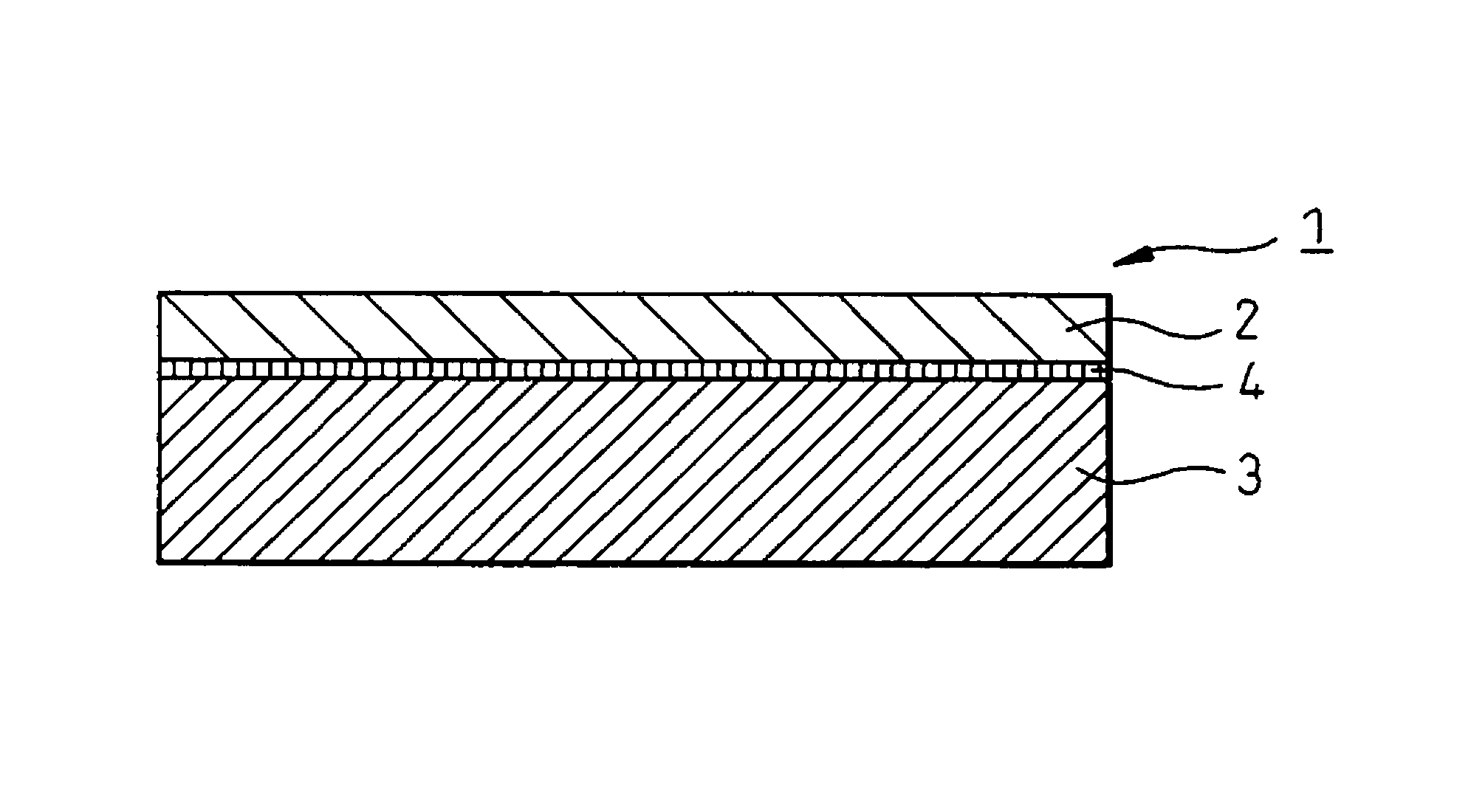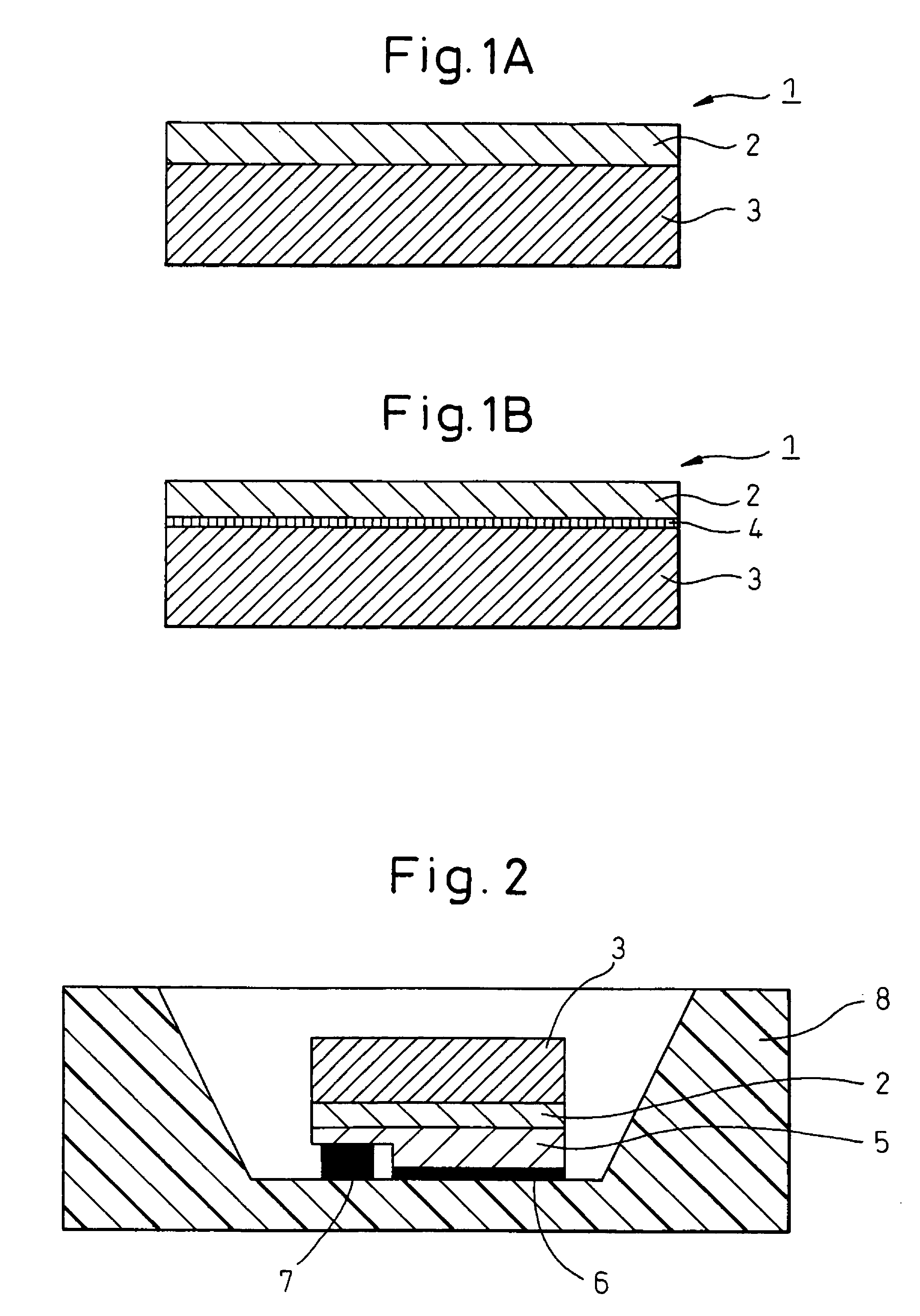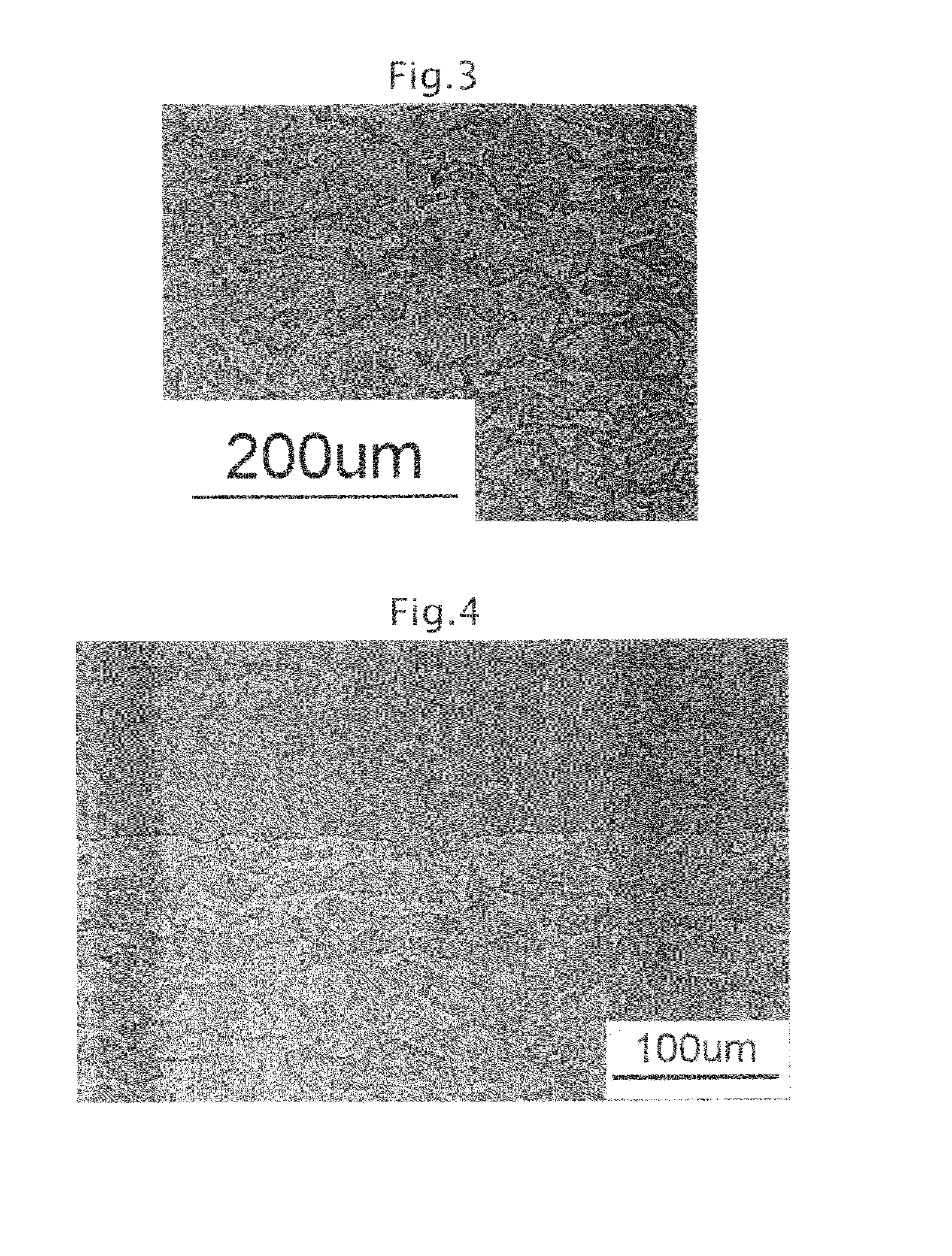Substrate for light-emitting diode, and light-emitting diode
a technology of light-emitting diodes and substrates, which is applied in the direction of solid-state devices, natural mineral layered products, water-setting substance layered products, etc., can solve the problems of white light-emitting diodes using substrates, uneven color of light-emitting diodes, and uneven distribution of fluorescent powders
- Summary
- Abstract
- Description
- Claims
- Application Information
AI Technical Summary
Benefits of technology
Problems solved by technology
Method used
Image
Examples
example 1
[0046]An α-Al2O3 powder (purity: 99.99%) and a Y2O3 powder (purity: 99.999%) were weighed to give a molar ratio of 82:18 and a CeO2 powder (purity: 99.99%) was weighed to amount of 0.03 mol per mol of Y3Al5O12 produced by the reaction of oxides charged. These powders were wet-mixed in ethanol by a ball mill for 16 hours, and then the solvent ethanol was removed by using an evaporator to obtain a raw material powder. This raw material powder was preliminarily melted in a vacuum furnace and used as a raw material for unidirectional solidification.
[0047]The obtained raw material was directly charged into a molybdenum crucible and after setting the crucible in a unidirectional solidification apparatus, the raw material was melted under a pressure of 1.33×10−3 Pa (10−5 Torr). In the same atmosphere, the crucible was moved down at a speed of 5 mm / hour, whereby a solidified body comprising a garnet crystal Y3Al5O12:Ce and an α-type aluminum oxide crystal Al2O3 was obtained. This solidified...
example 2
[0053]A solution containing 30% of spherical amorphous silica having a diameter of 10 to 20 nm was coated by a spin coater on the plate of 10 mm×10 mm of ceramic composite for light conversion produced in Example 1. After the coating, this substrate was heated at 60° C. to remove the solvent component. Thereafter, the same Al2O3 single crystal plate as that of Example 1 was placed on the amorphous silica-coated surface of this plate of ceramic composite for light conversion, and the obtained sample was set in a hot-press device, heated at 1,300° C. while applying a pressure of 0.03 MPa, kept for 2 hours and then gradually cooled. FIG. 6 shows the substrate obtained. The upper side is the Al2O3 single crystal plate and the lower side is the plate of ceramic composite for light conversion. A silica phase which is an adhesion phase is present at the interface.
[0054]When a light-emitting diode was produced in the same manner as in Example 1 by using the above-produced substrate for ligh...
example 3
[0055]An epoxy resin and a CaAlSiN3 powder as a red fluorescent substance were weighed at a weight ratio of 1:1 and mixed in a paint shaker for 30 minutes to obtain a mixed slurry. This slurry was placed in a vacuum desiccator to remove bubbles, and the resulting paste was coated on the plate of ceramic composite for light conversion produced in Example 1. Furthermore, a sapphire substrate having formed thereon a blue light-emitting element produced by the same method as in Example 1 was laminated with the ceramic composite for light conversion. This material was placed in a constant-temperature bath at 150° C. and the resin was cured. The obtained substrate was divided by drawing a scribe line and applying external force, whereby a light-emitting diode device was obtained.
[0056]FIG. 7 shows the light emission spectrum of the device obtained. Emission of blue light, emission of yellow fluorescence from the substrate and emission of red light from the red fluorescent substance were a...
PUM
| Property | Measurement | Unit |
|---|---|---|
| temperature | aaaaa | aaaaa |
| time | aaaaa | aaaaa |
| temperature | aaaaa | aaaaa |
Abstract
Description
Claims
Application Information
 Login to View More
Login to View More - R&D
- Intellectual Property
- Life Sciences
- Materials
- Tech Scout
- Unparalleled Data Quality
- Higher Quality Content
- 60% Fewer Hallucinations
Browse by: Latest US Patents, China's latest patents, Technical Efficacy Thesaurus, Application Domain, Technology Topic, Popular Technical Reports.
© 2025 PatSnap. All rights reserved.Legal|Privacy policy|Modern Slavery Act Transparency Statement|Sitemap|About US| Contact US: help@patsnap.com



